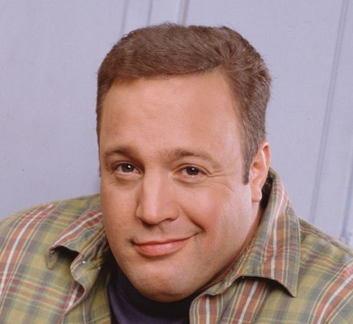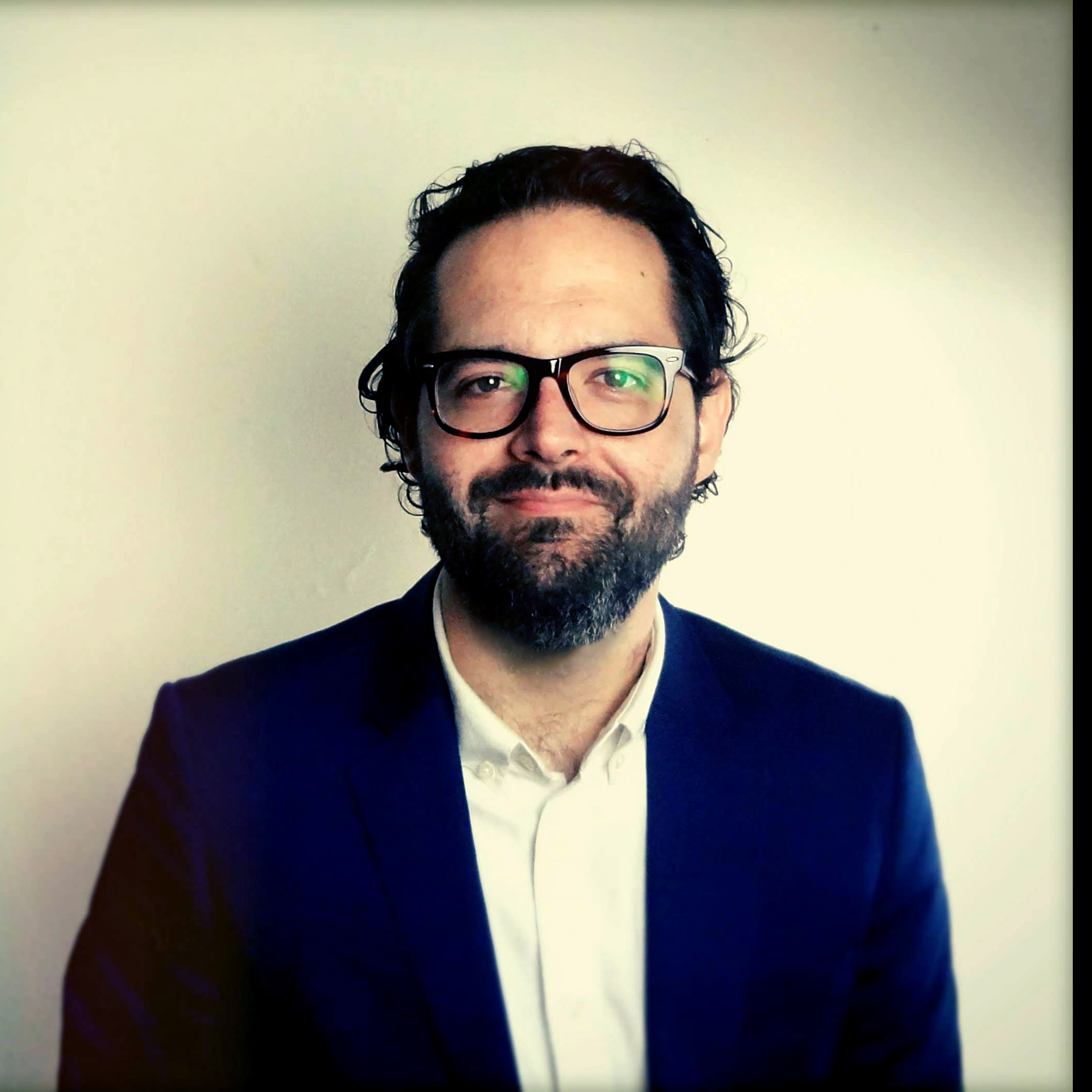Last year, more middle-aged adults were binge drinking, using marijuana or consuming hallucinogens than ever before, according to a new report. Cannabis use surged among young adults under 30, alongside historic rates of vaping, as well.

Damn, beat me by 5 minutes!
Would you like to
knowsmoke more?o7
Is anyone really surprised cannabis use surged? Like with legalization you would think it would have that cause and effect.
Im glad psychedelic use surged. Makes you see reality differently and can be amazing for mental health issues which needs to be utilized. Fuck the war on drugs
Alcohol can go away though but it’s hard when there is quite literally no future to be seen
If I recall the research, increases are pretty slight from legalization.
COVID and the largest disruption to social and economic conditions in human history is the alpha and omega for pretty much anything that significantly changed in the last three years.
it’s kinda hard to give a fuck about public health regarding cannabis when watching the complete apathy for COVID precautions.
oh, cannabis makes some people think slower? you sure that wasn’t brain damage from a deadly virus?
oh, cannabis makes some people think slower? you sure that wasn’t brain damage from a deadly virus?
Same thing with lung damage. Like oh, is that something you care about now?
I know I’m not the same anymore
Damn, that’s a good point. It’s like broken windows theory for society at large.
I’d be curious on this research. I could be completely wrong but I feel like with legalization and having the conveniency of dispensaries it would mean more frequent use and even new use. Do you know if this research was for why they used and not if they would of used it wasn’t legal and didn’t have dispensaries?
From my understanding, at least in Canada, we’ve an increase in older people using and a decrease in younger people trying.
Essentially older people who may have used back in the day generally gave it up when they had kids and lost their plug. Now that it’s legal and available they are going back to it since its easier to get now then having to know some guy and go through that whole rigmarole. As for the younger crowd, dealers aren’t as common since most people just buy it from the store, or grow their own and they have other avenues to form addictions, like social media.
I’m finding conflicting research now that I’m looking again. In Colorado for example use definitely went up after legalization but not by a significant amount more than it was already going up, year over year. Youth usage went down.
Maybe for new people that didn’t use it because it was illegal.
Before it was legal I would buy as much as I could because I hated meeting dealers. Now that I can go to a shop I don’t really mind going a few days without.
I tend to smoke more when I have a lot vs just having an eighth from the dispo that I’ll just stretch because I know I can just go get more any time with ease.
Also ime with new users where I live. People love the 5mg gummies. That’s not what we used to do with edibles before legalization. I don’t think a lot of new users are getting baked like snoop, unless maybe they are a part of party culture.
Also it seems younger people consider always-stoned-stoners junkies. It’s not a cool look anymore it’s just pretty pathetic and sad.
Ditto. The first 3 paragraphs. Ditto. I smoke less because I can pick up whenever. I ran out 2 weeks ago and will pick up next time I’m in the city and in the area. I could go to the city now but I’m too lazy.
Alcohol can go away though but it’s hard when there is quite literally no future to be seen
This hits hard.
Same here. Might as well surf the piss till you find the light at the end of the tube.
Im glad psychedelic use surged. Makes you see reality differently and can be amazing for mental health issues which needs to be utilized. Fuck the war on drugs
I would still be on SSRIs if it wasn’t for my magic mushies, and they’ve done better than SSRIs ever did.
I’ve started growing some for this exact purpose. How do you dose and what form do you take them?
0.25g every other day via ground mush in capsules. Good luck growing! It’s kinda fun too!
I recommend starting with actual trips before getting into micro dosing. Start with a low to moderate dose and wait at least two weeks before trips. Good luck, enjoy the journey!
Feel it out. I’d say 0.25g.
I want to use mushrooms again but I went on SSRIs. They changed my life for the better and without them I probably wouldn’t have tried an SSRI. Mushrooms seem better. I only did low doses but went through about an oz of shrooms over the time I used them.
I grow my own and usually come up with enough capsules for a year.
I became an alcoholic.
It’s a shitty drug.
deleted by creator
Alcohol will remain my favorite drug until they come out with drugs that are more fun than alcohol.
I’ve done just about everything but heroin, and whole heroin does seem really fun, the externalities are too big to ignore.
Several cities (including my own) and Oregon have decriminalized hallucinogenic mushrooms so it is not a huge surprise that rates increased.
Just like how the people in the US are surprised how many people are willing to say “I’m queer” now that queer people have a voice.
I mean I agree the war on drugs and the way it’s policed is not the right call. But after looking at what’s happening in Oregon. Not sure I’m totally for just straight up legalize all the things. OD rates are up, and apparently it’s quite common for folks to be nodding off all over the place. It’s not the psechedelics like marijuana and lsd, it’s the synthetic opioids and harder drugs like heroin doing real damage.
Does anyone have a way to read the article without an account?
Oregon was setup to fail with it. The US is setup to fail right now. We can’t even agree that addiction is a mental health issue and should be addressed with therapy vs jail. Fentanyl will never be solved, let’s be real. Feds help bring it in.
Now if you set up clinics for people to do drugs safely AND gave them access to clean drugs it’s a completely different story.
It’s also not like that is unique to Oregon. Go to Seattle and you’ll see tons of people nodding and OD rates are higher everywhere
It’s below, broken into 3 parts because apparently Lemmy has a comment limit, but TLDR the bureaucracy of providing services that help drug users has been slower to implement than the law that made drugs legal was. Mostly due to republicans constantly trying to attack any bills or laws that would help addicts, though it should be noted that now even a decent chunk of democrats want to undo the law since people aren’t getting help they were promised by the government.
POLITICS
WHAT HAPPENED WHEN OREGON DECRIMINALIZED HARD DRUGS
A bold reform effort hasn’t gone as planned.
JULY 19, 2023
This article was featured in One Story to Read Today, a newsletter in which our editors recommend a single must-read from The Atlantic, Monday through Friday. Sign up for it here.
Updated at 11:25 a.m. ET on July 20, 2023
Three years ago, while the nation’s attention was on the 2020 presidential election, voters in Oregon took a dramatic step back from America’s long-running War on Drugs. By a 17-point margin, Oregonians approved Ballot Measure 110, which eliminated criminal penalties for possessing small amounts of any drug, including cocaine, heroin, and methamphetamine. When the policy went into effect early the next year, it lifted the fear of prosecution for the state’s drug users and launched Oregon on an experiment to determine whether a long-sought goal of the drug-policy reform movement—decriminalization—could help solve America’s drug problems.
Early results of this reform effort, the first of its kind in any state, are now coming into view, and so far, they are not encouraging. State leaders have acknowledged faults with the policy’s implementation and enforcement measures. And Oregon’s drug problems have not improved. Last year, the state experienced one of the sharpest rises in overdose deaths in the nation and had one of the highest percentages of adults with a substance-use disorder. During one two-week period last month, three children under the age of 4 overdosed in Portland after ingesting fentanyl.
For decades, drug policy in America centered on using law enforcement to target people who sold, possessed, or used drugs—an approach long supported by both Democratic and Republican politicians. Only in recent years, amid an epidemic of opioid overdoses and a national reconsideration of racial inequities in the criminal-justice system, has the drug-policy status quo begun to break down, as a coalition of health workers, criminal-justice-reform advocates, and drug-user activists have lobbied for a more compassionate and nuanced response. The new approach emphasizes reducing overdoses, stopping the spread of infectious disease, and providing drug users with the resources they need—counseling, housing, transportation—to stabilize their lives and gain control over their drug use.
Oregon’s Measure 110 was viewed as an opportunity to prove that activists’ most groundbreaking idea—sharply reducing the role of law enforcement in the government’s response to drugs—could work. The measure also earmarked hundreds of millions of dollars in cannabis tax revenue for building a statewide treatment network that advocates promised would do what police and prosecutors couldn’t: help drug users stop or reduce their drug use and become healthy, engaged members of their communities. The day after the measure passed, Kassandra Frederique, executive director of the Drug Policy Alliance, one of the nation’s most prominent drug-policy reform organizations, issued a statement calling the vote a “historic, paradigm-shifting win” and predicting that Oregon would become “a model and starting point for states across the country to decriminalize drug use.”
But three years later, with rising overdoses and delays in treatment funding, even some of the measure’s supporters now believe that the policy needs to be changed. In a nonpartisan statewide poll earlier this year, more than 60 percent of respondents blamed Measure 110 for making drug addiction, homelessness, and crime worse. A majority, including a majority of Democrats, said they supported bringing back criminal penalties for drug possession. This year’s legislative session, which ended in late June, saw at least a dozen Measure 110–related proposals from Democrats and Republicans alike, ranging from technical fixes to full restoration of criminal penalties for drug possession. Two significant changes—tighter restrictions on fentanyl and more state oversight of how Measure 110 funding is distributed—passed with bipartisan support.
Few people consider Measure 110 “a success out of the gate,” Tony Morse, the policy and advocacy director for Oregon Recovers, told me. The organization, which promotes policy solutions to the state’s addiction crisis, initially opposed Measure 110; now it supports funding the policy, though it also wants more state money for in-patient treatment and detox services. As Morse put it, “If you take away the criminal-justice system as a pathway that gets people into treatment, you need to think about what is going to replace it.”
Many advocates say the new policy simply needs more time to prove itself, even if they also acknowledge that parts of the ballot measure had flaws; advocates worked closely with lawmakers on the oversight bill that passed last month. “We’re building the plane as we fly it,” Haven Wheelock, a program supervisor at a homeless-services provider in Portland who helped put Measure 110 on the ballot, told me. “We tried the War on Drugs for 50 years, and it didn’t work … It hurts my heart every time someone says we need to repeal this before we even give it a chance.”
Measure 110 went into effect at a time of dramatic change in U.S. drug policy. Departing from precedent, the Biden administration has endorsed and increased federal funding for a public-health strategy called harm reduction; rather than pushing for abstinence, harm reduction emphasizes keeping drug users safe—for instance, through the distribution of clean syringes and overdose-reversal medications. The term harm reduction appeared five times in the ballot text of Measure 110, which forbids funding recipients from “mandating abstinence.”
Matt Sutton, the director of external relations for the Drug Policy Alliance, which helped write Measure 110 and spent more than $5 million to pass it, told me that reform advocates viewed the measure as the start of a nationwide decriminalization push. The effort started in Oregon because the state had been an early adopter of marijuana legalization and is considered a drug-policy-reform leader. Success would mean showing the rest of the country that “people did think we should invest in a public-health approach instead of criminalization,” Sutton said.
To achieve this goal, Measure 110 enacted two major changes to Oregon’s drug laws. First, minor drug possession was downgraded from a misdemeanor to a violation, similar to a traffic ticket. Under the new law, users caught with up to 1 gram of heroin or methamphetamine, or up to 40 oxycodone pills, are charged a $100 fine, which can be waived if they call a treatment-referral hotline. (Selling, trafficking, and possessing large amounts of drugs remain criminal offenses in Oregon.) Second, the law set aside a portion of state cannabis tax revenue every two years to fund a statewide network of harm-reduction and other services. A grant-making panel was created to oversee the funding process. At least six members of the panel were required to be directly involved in providing services to drug users; at least two had to be active or former drug users themselves; and three were to be “members of communities that have been disproportionately impacted” by drug criminalization, according to the ballot measure.
Backers of Measure 110 said the law was modeled on drug policies in Portugal, where personal drug possession was decriminalized two decades ago. But Oregon’s enforcement-and-treatment-referral system differs from Portugal’s. Users caught with drugs in Portugal are referred to a civil commission that evaluates their drug use and recommends treatment if needed, with civil sanctions for noncompliance. Portugal’s state-run health system also funds a nationwide network of treatment services, many of which focus on sobriety. Sutton said drafters of Measure 110 wanted to avoid anything that might resemble a criminal tribunal or coercing drug users into treatment. “People respond best when they’re ready to access those services in a voluntary way,” he said.
Almost immediately after taking effect, Measure 110 encountered problems. A state audit published this year found that the new law was “vague” about how state officials should oversee the awarding of money to new treatment programs, and set “unrealistic timelines” for evaluating and funding treatment proposals. As a result, the funding process was left largely to the grant-making panel, most of whose members “lacked experience in designing, evaluating and administrating a governmental-grant-application process,” according to the audit. Last year, supporters of Measure 110 accused state health officials, preoccupied with the coronavirus pandemic, of giving the panel insufficient direction and resources to handle a flood of grant applications. The state health authority acknowledged missteps in the grant-making process.
The audit described a chaotic process, with more than a dozen canceled meetings, potential conflicts of interest in the selection of funding recipients, and lines of applicant evaluations left blank. Full distribution of the first biennial payout of cannabis tax revenue—$302 million for harm reduction, housing, and other services—did not occur until late 2022, almost two years after Measure 110 passed. Figures released by the state last month show that, in the second half of 2022, recipients of Measure 110 funding provided some form of service to roughly 50,000 “clients,” though the Oregon Health Authority has said that a single individual could be counted multiple times in that total. (A study released last year by public-health researchers in Oregon found that, as of 2020, more than 650,000 Oregonians required, but were not receiving, treatment for a substance-use disorder.)
Meanwhile, the new law’s enforcement provisions have proved ineffectual. Of 5,299 drug-possession cases filed in Oregon circuit courts since Measure 110 went into effect, 3,381 resulted in a recipient failing to pay the fine or appear in court and facing no further penalties, according to the Oregon Judicial Department; about 1,300 tickets were dismissed or are pending. The state audit found that, during its first 15 months in operation, the treatment-referral hotline received just 119 calls, at a cost to the state of $7,000 per call. A survey of law-enforcement officers conducted by researchers at Portland State University found that, as of July 2022, officers were issuing an average of just 300 drug-possession tickets a month statewide, compared with 600 drug-possession arrests a month before Measure 110 took effect and close to 1,200 monthly arrests prior to the outbreak of COVID-19.
“Focusing on these tickets even though they’ll be ineffective—it’s not a great use of your resources,” Sheriff Nate Sickler of Jackson County, in the rural southern part of the state, told me of his department’s approach.
Advocates have celebrated a plunge in arrests. “For reducing arrests of people of color, it’s been an overwhelming success,” says Mike Marshall, the director of Oregon Recovers. But critics say that sidelining law enforcement has made it harder to persuade some drug users to stop using. Sickler cited the example of drug-court programs, which multiple studies have shown to be highly effective, including in Jackson County. Use of such programs in the county has declined in the absence of criminal prosecution, Sickler said: “Without accountability or the ability to drive a better choice, these individuals are left to their own demise.”
The consequences of Measure 110’s shortcomings have fallen most heavily on Oregon’s drug users. In the two years after the law took effect, the number of annual overdoses in the state rose by 61 percent, compared with a 13 percent increase nationwide, according to the Centers for Disease Control and Prevention. In neighboring Idaho and California, where drug possession remains subject to prosecution, the rate of increase was significantly lower than Oregon’s. (The spike in Washington State was similar to Oregon’s, but that comparison is more complicated because Washington’s drug policy has fluctuated since 2021.) Other states once notorious for drug deaths, including West Virginia, Indiana, and Arkansas, are now experiencing declines in overdose rates.
In downtown Portland this spring, police cleared out what The Oregonian called an “open-air drug market” in a former retail center. Prominent businesses in the area, including the outdoor-gear retailer REI, have announced closures in recent months, in part citing a rise in shoplifting and violence. Earlier this year, Portland business owners appeared before the Multnomah County Commission to ask for help with crime, drug-dealing, and other problems stemming from a behavioral-health resource center operated by a harm-reduction nonprofit that was awarded more than $4 million in Measure 110 funding. In April, the center abruptly closed following employee complaints that clients were covering walls with graffiti and overdosing on-site. A subsequent investigation by the nonprofit found that a security contractor had been using cocaine on the job. The center reopened two weeks later with beefed-up security measures.
Portland’s Democratic mayor, Ted Wheeler, went so far as to attempt an end run around Measure 110 in his city. Last month, Wheeler unveiled a proposal to criminalize public drug consumption in Portland, similar to existing bans on open-air drinking, saying in a statement that Measure 110 “is not working as it was intended to.” He added, “Portland’s substance-abuse problems have exploded to deadly and disastrous proportions.” Wheeler withdrew the proposal days later after learning that an older state law prohibits local jurisdictions from banning public drug use.
Despite shifting public opinion on Measure 110, many Oregon leaders are not ready to give up on the policy. Earlier this month, Oregon Governor Tina Kotek signed legislation that strengthens state oversight of Measure 110 and requires an audit, due no later than December 2025, of about two dozen aspects of the measure’s performance, including whether it is reducing overdoses. Other bills passed by the legislature’s Democratic majority strengthened criminal penalties for possession of large quantities of fentanyl and mandated that school drug-prevention programs instruct students about the risks of synthetic opioids. Republican proposals to repeal Measure 110 outright or claw back tens of millions of dollars in harm-reduction funding were not enacted.
The fallout from Measure 110 has received some critical coverage from media outlets on the right. “It is predictable,” a scholar from the Hudson Institute told Fox News. “It is a tragedy and a self-inflicted wound.” (Meanwhile, in Portugal, the model for Oregon, some residents are raising questions about their own nation’s decriminalization policy.) But so far Oregon’s experience doesn’t appear to have stopped efforts to bring decriminalization to other parts of the United States. “We’ll see more ballot initiatives,” Sutton, of the Drug Policy Alliance, said, adding that advocates are currently working with city leaders to decriminalize drugs in Washington, D.C.
Supporters of Measure 110 are now seeking to draw attention to what they say are the policy’s overlooked positive effects. This summer, the Health Justice Recovery Alliance, a Measure 110 advocacy organization, is leading an effort to spotlight expanded treatment services and boost community awareness of the treatment-referral hotline. Advocates are also coordinating with law-enforcement agencies to ensure that officers know about local resources for drug users. “People are hiring for their programs; outreach programs are expanding, offering more services,” Devon Downeysmith, the communications director for the group, told me.
An array of services around the state have been expanded through the policy: housing for pregnant women awaiting drug treatment; culturally specific programs for Black, Latino, and Indigenous drug users; and even distribution of bicycle helmets to people unable to drive to treatment meetings. “People often forget how much time it takes to spend a bunch of money and build services,” said Wheelock, the homeless-services worker, whose organization received more than $2 million in funding from Measure 110.
Still, even some recipients of Measure 110 funding wonder whether one of the law’s pillars—the citation system that was supposed to help route drug users into treatment—needs to be rethought. “Perhaps some consequences might be a helpful thing,” says Julia Pinsky, a co-founder of Max’s Mission, a harm-reduction nonprofit in southern Oregon. Max’s Mission has received $1.5 million from Measure 110, enabling the organization to hire new staff, open new offices, and serve more people. Pinsky told me she is proud of her organization’s work and remains committed to the idea that “you shouldn’t have to go to prison to be treated for substance use.” She said that she doesn’t want drug use to “become a felony,” but that some people aren’t capable of stopping drug use on their own. “They need additional help.”
Brandi Fogle, a regional manager for Max’s Mission, says her own story illustrates the complex trade-offs involved in reforming drug policy. Three and a half years ago, she was a homeless drug user, addicted to heroin and drifting around Jackson and Josephine Counties. Although she tried to stop numerous times, including one six-month period during which she was prescribed the drug-replacement medication methadone, she told me that a 2020 arrest for drug possession was what finally turned her life around. She asked to be enrolled in a 19-month drug-court program that included residential treatment, mandatory 12-step meetings, and a community-service project, and ultimately was hired by Pinsky.
Since Measure 110 went into effect, Fogle said, she has gotten pushback from members of the community for the work Max’s Mission does. She said that both the old system of criminal justice and the new system of harm reduction can benefit drug users, but that her hope now is to make the latter approach more successful. “Everyone is different,” Fogle said. “Drug court worked for me because I chose it, and I wouldn’t have needed drug court in the first place if I had received the kind of services Max’s Mission provides. I want to offer people that chance.”
This article originally suggested that REI’s store in Portland had closed; it is scheduled to close early next year.
Jim Hinch is a senior editor at Guideposts magazine.
I should have included the archive link
Binge drinking is the misuse of alcohol. But use to excess isn’t implied here for cannabis or hallucinogens.
It’s like comparing increases in murder, jay walking and loitering; just not very helpful really.
Almost like the younger generations got absolutely stalled and now have rough futures thanks to climate change.
Throw in a decade or two of “marijuana is bad and will leave you addicted and homeless” just to grow up and find out “nope that was primarily just a few greedy bastards shoving opiates down our throats” and wham, you’ve got yourself a generation primed for escapism.
Hatred will not be humanity’s end.
Greed will.
The Wealthy Boomers stole the future from their own kids eyes wide open, now they and their devoted lackeys want to bitch about the swaths of disaffected, that they caused, numbing the pain of that reality.
What do they want? For us to thank them for the opportunity to have to clean up the multi-generational fallout of their economic, cultural, and ecological damage and be grateful for it? Fuck off with that.
Humanity will eventually overcome the lead poisoned generation’s kneecapping of it, but don’t expect anyone to start whistling about it.
Hmmmm. Let’s see.
A world on the brink of all-out war again, political parties diving head first into the shallow end of fascism, and increasing signs that mother earth is going to shake us off like a bad case of the fleas.
Yep. Pass the bong brothers and sisters and don’t skimp on the micro-dose.
Turn that micro-dose into a macro-dose and I’m in!
Now how do we start slipping Republicans cannabis brownies so they lighten the fuck up?
A high Nazi is still a Nazi. They don’t need to lighten up they need to be excised like tumors, good thing pot can help with tumors
Yeah, the Ku Klux Klan smoked weed and it didn’t chill them out
On a somewhat related note - man, Jeff Sessions was and is an asshole
Gen-X and millennials are getting old and their habits never changed. Film at eleven.
Binge drinking aside; weed being legalized in a number of states over the past decade, in addition to this generation realizing the war on drugs was pure nonsense, yeah of course people enjoy getting high. More than likely their reporting is that more people are comfortable admitting they like to party due to society’s relaxing views on drug use.
Might as well, not like any of us have a future. The most you can hope for is you live past retirement age and get to eat cat food and lay in your own filth in a nursing home. We could fix all our problems easily step 1. Don’t listen to the economists step 2. Don’t listen to the shamens, but we won’t.
So smoke them if you got them.
I’m in my forties and last year I got a wild hair and thought that I should try cannabis at least once in my life, and I bought a gummy to try. I spent all night waiting for anything to happen, and just ended up going to bed. I’m missing out on what these people in the article are doing I guess because that was just boring.
It’s very common to not feel anything the first time. I don’t know if there is a scientific reason why, I’d be interested to see a study on it. My guess is dosing issues and maybe preconceptions getting in the way.
You can always try again with a higher dose and/or different delivery method. Edibles especially are difficult to dose because they kick in 2h+ after ingestion and heavily depend on metabolism. Inhalation is essentially immediate.
Yeah, edibles are often really weak for me, even when they work. Try smoking or vaping for a better sense of what it’s like.
What dose should I use?
Edibles flat do not work for me. Smoking/vaping however does the trick every single time. Some people are just wired different, you may be one of those people.
I am wondering if it’s because I take naltrexone come to think of it.
Edibles heavily depend on your weight and how much you’ve had to eat, so I can’t say. Smoking/vaping is easier because the effects are immediate so you can dose as you go.
Luckily you can’t OD, so the worst thing that happens is you get really nauseous. You’d have to take A LOT for that to happen though, or combine it with alcohol.
You can always try a dab pen. Those are really easy and, most likely, you’d get immediately blasted after just one hit. Downside is that the intake method definitely affects the high and dab pens are one of the worst ways to go, or so I’ve heard.
I just don’t have the best lungs, asthma, so I’m leery of smoking anything. I’ll see if I feel wild enough one weekend to try the dab pen.
You could also try fast acting edibles or a tincture, those hit your bloodstream quicker and differently than normal edibles
I think tincture might be an idea, thanks amigo.
Broken arm and they wouldn’t give me any pain meds, I decided to try cannabis. Best painkiller ever. Now I pop a gummy just about every Saturday night, or before a flight. As a whole it is enjoyable but for four or so hours I am pretty much useless. With booze I can still get some stuff done.
I remember my friends and I smoked like $500 in weed in one night to celebrate our high school graduation. It was my first time. The only difference I remember feeling is my throat hurting and getting the munchies.
Yeah I ate some cereal and went to bed. Big whoop.
You might just not be affected by gummies, other edibles may work for you. If you’re in a legal state, tinctures and vape carts are a good way to experience it.
I’m like you in that edibles really don’t affect me (I’ve had close to a gram before I felt anything), but I enjoy microdosing with THC carts.
Maybe I’m not. I’m also on naltrexone (not for substance abuse) and I wonder if that mutes the effect.
deleted by creator
Ok I’ll buy more Cheerios lol.
GENX RULEZ!
MILLENNIUMALES DROOL!
Now if we could just get them elected.
More people just admit now. The drinking is always concerning
hits the bong hell ya it did!





















